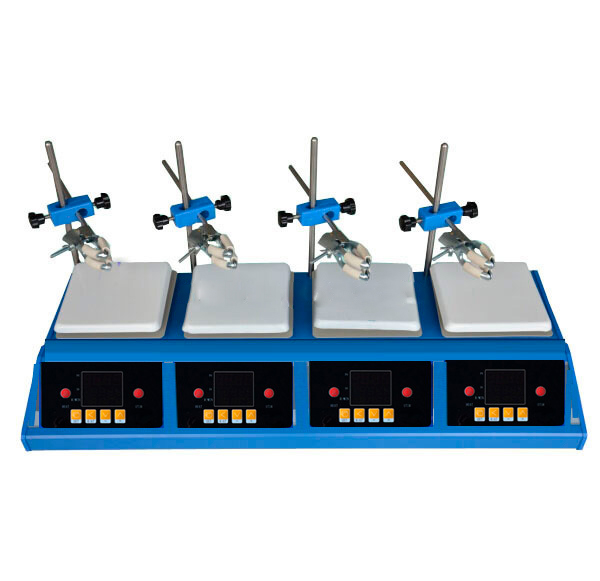Heating plates are used in the laboratory to heat substances, prepare solutions, support the shaking function in different titrations, and to carry out various chemical reactions. These devices are sometimes used to heat and help dissolve solid samples by the action of concentrated strong acids
However, even if all the necessary care is taken, splashes and spills may occur that litter the surface of the plate, which warrants cleaning to remove these substances. Due to the diversity of compounds used in the laboratory, with different degrees of reactivity and toxicity, it is important to clean the heating plate.
Some directions for cleaning the heating plate
Remember, the heating plate is an electrical device, containing internal circuits, cables, fuses, resistors and other elements that should not be intervened or improperly handled during the use and maintenance of the plate. For cleaning, it is generally recommended:
- If the device requires maintenance, disconnect it from the power grid. This can prevent possible electric shocks to people who handle it.
- If the iron has been used for heating, wait until the plate reaches room temperature before cleaning.
- For safety, for cleaning, it is suggested that the person wear gloves.
- Standard ethanol (75%), 70% isopropyl alcohol, or other recommended cleaners may be used to clean laboratory equipment to clean and decontaminate equipment.
- Sometimes, when only trying to remove dust, a slightly damp cloth can be used.
The cleaning of the heating plate can be done on a regular basis, according to a cleaning and maintenance plan. However, it is recommended that you clean your computer after use, especially if you have tampered with substances that can degrade the integrity of your computer. This cleaning will extend the service life of the heating plate.
What to do in case of major maintenance of the heating plates?
All maintenance and repair work can only be performed by qualified and specifically trained personnel. This has to be the case, as the various electronic components and internal sensors can be compromised by improper handling. In other cases, minor repairs may be possible.
One of the things you can do is replace the fuse. This requires unplugging the device from the power outlet and disconnecting the power plug from the back of the device. Then remove the fuse by applying a light pressure in the recess, remove the fuse from its holder, check it and, if necessary, replace it with the correct fuse in consideration of the appropriate voltage and amperage.
How should the heating plates be stored?
Heating plates should be placed on clean, heat-resistant surfaces, away from water sources and with a power supply suitable for their operating requirements. Likewise, when stored, it can be made on site under conditions similar to those of use, and if possible, covered to prevent them from filling with dust.
In the case of dual plates (heating and shaking), improper storage of the magnetic stirring element (storage of several elements together, leading to unexpected disorientation of the magnetic domain) is one of the reasons for wear of the magnetic properties of the element.
And, when you lock them, another reason is to work at temperatures close to the temperatures of the point of Curie for these elements, which are at 200 ° C. In that case, you place the element exactly in the center of the working surface of the device according to the poles and leave it for 8-12 hours so that it recovers its original properties.
Kalstein heating plates as allies in laboratory work
The heating and shaking plates of the equipment manufacturer Kalstein, are one of the most reliable and best positioned on the market. For work in chemistry and biology laboratories are of wide use, and they provide a heating temperature that can reach up to 380 degrees Celsius, easy handling, an LCD screen that allows to visualize the temperature and agitation, and a design that protects the electronics of the equipment in case of spills. For purchases, prices and quotations, you can contact the web pages HERE and HERE


